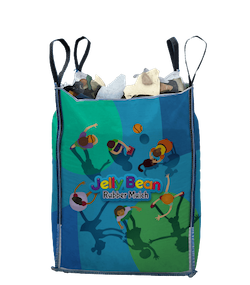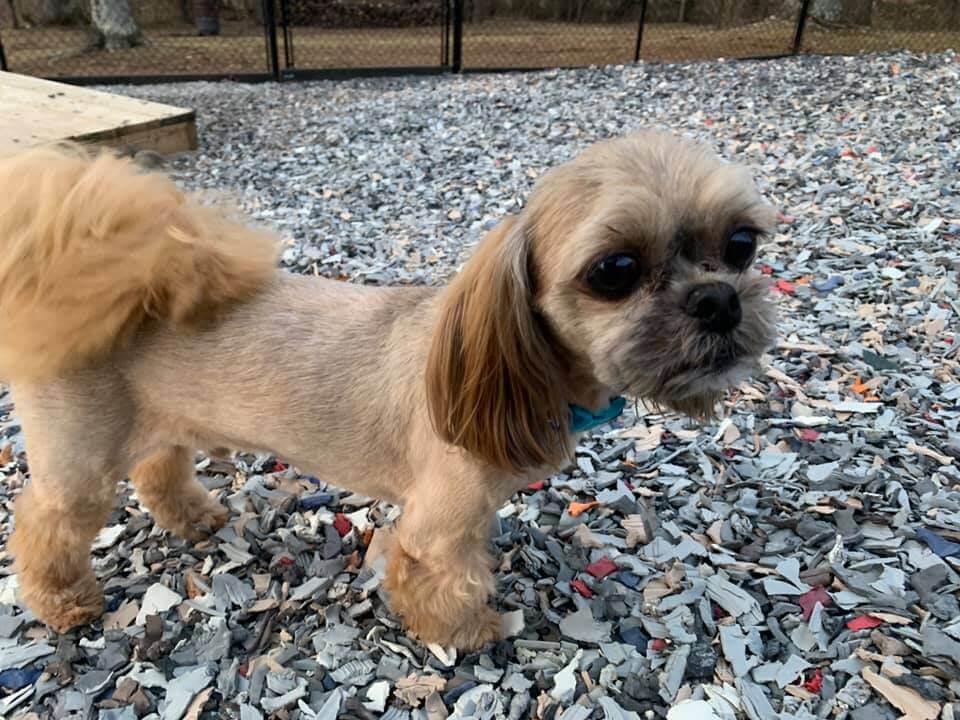
Get a Quote Today
If you’re in the market for playground rubber mulch give us a chance to present you with a no-obligaiton free quote for your playground today.

Training your dog on an agility course is rewarding for both you and your canine best friend. This sport is not only a good workout for your pup…it also provides mental stimulation. Not to mention this hobby creates a deeper bond between you and your doggo!
Are you ready to train your dog? You’ve come to the right place. We’ve put together the ultimate guide on how to build a dog agility course in order to save you time and money.
What to Buy and Where to Get It
When deciding what to buy, there are must haves and nice to haves. When choosing where to buy these items, think about quality and price. To make your choice easier, we have included price ranges and recommendations to help you decide what to buy and where to get it.
How to Choose Obstacles
When you think dog agility course, the first thing to come to mind are the obstacles. Choosing obstacles is an opportunity for you to get creative and your doggo to get a fun, unique workout. However, there are two important factors to consider when making your choice.
Your Dog’s Ability – Beginner, intermediate, and advanced are the three categories. These determine the number and type of obstacles, as well as the layout of the course.
Your Pup’s Size – When looking at obstacles of different sizes, sometimes your canine’s measurements make a difference. For example, a tire jump for a Great Dane will not be the same width as a tire jump for a Jack Russell Terrier.
Obstacles
Once you know your dog’s capability and size, you can start choosing what you want to include for your doggie. The following is a list of obstacles required by the USDAA for an official dog course:
Dog Walk
The dog walk consists of two ramps and a straight, elevated walkway in between. Your four-legged companion will learn confidence and stability as they do the dog walk. Ensure the surfaces are non-slip and the planks are set up solidly. If you have more than one size dog, you can purchase adjustable walks.
Affordable: Trixie Agility Dog Walk
Moderately Priced: Rubber Top Dog Walk
Expensive: The Park Catalog Dog Walk
Teeter-Totter
These seesaws come in both wood and aluminum, and you can build your own! You can also purchase an agility teeter-totter, or one made for small children. The official length of the ramp should be 12 feet. However, it is more important for your doggo to be able to see the base when close.
Affordable: Relaxadays Pet Seesaw
Moderately Priced: Trixie Agility Dog Training Seesaw
Expensive: DogSport Rubber Top
A-Frame
An A-frame is just as it sounds. It is in the shape of an A, so the two ramps that meet at the top are quite vertical. However, they cannot have too much of an incline. The official numbers on the angle are 104° or 112½°, depending on whether you go by the instructions for the Championship or Performance Program.
If making this yourself, be sure to include rungs to add traction. If buying, check out our recommendations:
Affordable: Active Dogs Agility A-Frame
Moderately Priced: Rubber Surface Agility A-Frame
Expensive: BarkPark King of the Hill
Collapsed Tunnel
Collapsed tunnels are tunnels with a bend made from fabric. Toddler toy tunnels can be utilized in place of the more expensive manufactured products. The official minimum length is 12 feet, and the max length is 20 feet. Here are some suggestions:
Affordable: Yaheetech Dog Agility Tunnel
Moderately Priced: FurryFriends Agility Tunnel
Expensive: Rise8 Studios Dog Agility Tunnel
Table
The table is the simplest obstacle to DIY at little or no cost. This is a place for your dog to jump, sit, and pause briefly during the course. You can use anything from an old coffee table, to an ottoman, to a piece of plywood elevated on two concrete blocks.
If you are looking for an official pause table, we have picked out some favorites:
Affordable: SportDog Folding Pause Table
Moderately Priced: Blue-9 KLIMB Dog Training Platform
Expensive: Wooden Agility Pause Table
Pipe Tunnel
A pipe tunnel is a straight tunnel through which you lead your pup, and they are usually made of fabric to minimize the risk of injury. You can use children’s crawl-through toys as discussed earlier, or a long cardboard box (or attach some together).
The dimensions should be the same as the collapsed tunnel, and we have some professional recommendations:
Affordable: Houseables Dog Tunnel
Moderately Priced: Pacific Play Dog Training Chute
Expensive: TDAA Competition Tunnel
Two Winged Hurdles
These are two of the three winged jumps necessary. The third is the spread hurdle, which we cover next. According to the USDAA, the dog’s height determines the jump height and span length. Winged refers to the support poles on the sides: they should be higher than the bar.
Affordable: PAWISE Winged Hurdles
Moderately Priced: PawHut Dog Jump Bars
Expensive: Dog Agility Shop Travel Jump Set
Spread Hurdle
These hurdles are long and broad, meaning the bars are spread out to test jumping length. The bottom should be strong enough so it cannot be knocked over if your canine bestie doesn’t quite clear the bar. At the same time, look for a set easy enough to transport.
Affordable: Better Sporting Dogs Panel Jump
Moderately Priced: Agility Works Spread Jumps
Expensive: Aust Spread Hurdle
Tire Jump
If you purchase a tire jump, you can find them in adjustable heights. This is handy if you are working with more than one size of dog, or a puppy that will grow. You can also make your own tire jump in the same dimensions as required by the USDAA (a 20-inch opening and a 4-inch tire wall).
Affordable: PAWISE Tire Jump
Moderately Priced: Dog Agility Practice Hoop Jump
Expensive: Affordable Agility Red Competition Tire Jump
10 – 12 Weave Poles
These are a set of plastic poles placed close together, .6 meters (around 2 feet) between each. If you decide to make your own out of PVC pipe, do not bury them in the ground. This could hurt your dog. Instead, create a PVC track underneath to attach the poles. Tee pipe connectors will do the job nicely!
Affordable: PAWISE Weave Poles
Moderately Priced: Lord Anson Competition Grade Weave Poles
Expensive: Agility Weave Poles with Adjustable Spacing
Do It Yourself Dog Agility Course
There are considerable time and commitment required to build your own equipment. However, it is possible to do it safely and responsibly yourself. The key is to find instructions specific to your dog’s size and follow the directions. Here and here are two good places to start.
How to Plan the Dog Agility Course
There is no limit to the type of layout you create. In fact, we recommend you change things up every so often to challenge your canine friend. The main tip we have is to keep similar obstacles away from each other, such as the collapsible tunnel and pipe tunnel. USDAA suggests the distance between obstacles should be between 18 and 22 feet.
Surfacing
Before putting your plan into action, be aware of what’s underneath your diagrammed course. Is it concrete? Grass? Is it level? Uneven? For the most enjoyable, safe, dog-friendly route, it is key to clear away all potentially harmful objects. This includes items such as rocks and sticks. Additionally, the area should be level and a soft surface is better for your dog’s paws.
We might be biased, but our Jelly Bean Rubber Mulch makes an excellent choice for dog agility surfacing. Made from rubber tiles created for schools, the mulch is non-toxic, sterile, and contains no wire. Even if your four-legged friend falls from an obstacle, our product will protect them. You can rest assured your pup will be safe training on this surface.

If you’re in the market for playground rubber mulch give us a chance to present you with a no-obligaiton free quote for your playground today.